Atom
An atom is the smallest unit of an element that retains the chemical properties of that element. Atoms are composed of three types of subatomic particles: protons, neutrons, and electrons.
Structure of an Atom
The center of an atom contains a nucleus, which is composed of protons and neutrons. The protons have a positive charge, and the neutrons have no charge (they are neutral). Surrounding the nucleus are the electrons, which have a negative charge and are found in energy levels or shells around the nucleus.
Protons, Neutrons, and Electrons
- Protons: Positively charged subatomic particles found in the nucleus of an atom. They determine the identity of the element.
- Neutrons: Neutral subatomic particles found in the nucleus of an atom. They add mass to the atom but do not affect its chemical properties.
- Electrons: Negatively charged subatomic particles found in energy levels or shells surrounding the nucleus. They are involved in chemical bonding and reactions.
Study Guide
- What is an atom?
- What are the three types of subatomic particles and their charges?
- Where are protons and neutrons located in an atom?
- Where are electrons located in an atom?
- What is the significance of protons in determining the identity of an element?
- How do electrons contribute to chemical bonding and reactions?
Understanding the structure and properties of atoms is fundamental to understanding the behavior of matter and the interactions between different substances.
[Atom] Related Worksheets and Study Guides:
.◂Science Worksheets and Study Guides First Grade. My senses
Study Guide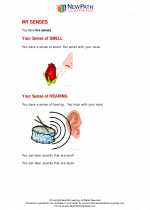 My senses
My senses  Activity Lesson
Activity Lesson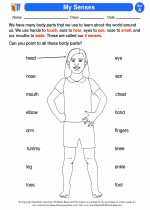 My Senses
My Senses  Worksheet/Answer key
Worksheet/Answer key My senses
My senses  Worksheet/Answer key
Worksheet/Answer key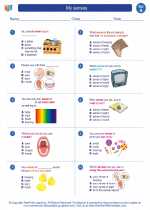 My senses
My senses  Worksheet/Answer key
Worksheet/Answer key My senses
My senses  Worksheet/Answer key
Worksheet/Answer key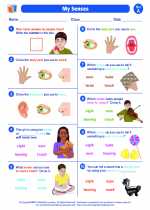 My senses
My senses  Worksheet/Answer key
Worksheet/Answer key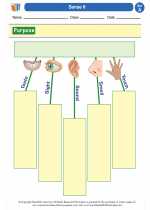 Sense It
Sense It  Worksheet/Answer key
Worksheet/Answer key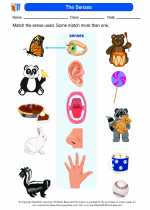 The Senses
The Senses  Vocabulary/Answer key
Vocabulary/Answer key My senses
My senses 

 Activity Lesson
Activity Lesson
 Worksheet/Answer key
Worksheet/Answer key
 Worksheet/Answer key
Worksheet/Answer key
 Worksheet/Answer key
Worksheet/Answer key
 Worksheet/Answer key
Worksheet/Answer key
 Worksheet/Answer key
Worksheet/Answer key
 Worksheet/Answer key
Worksheet/Answer key
 Vocabulary/Answer key
Vocabulary/Answer key

The resources above cover the following skills:
PHYSICAL SCIENCE (NGSS)
Waves and their Applications in Technologies for Information Transfer
Students who demonstrate understanding can:
Make observations to construct an evidence-based account that objects can be seen only when illuminated.